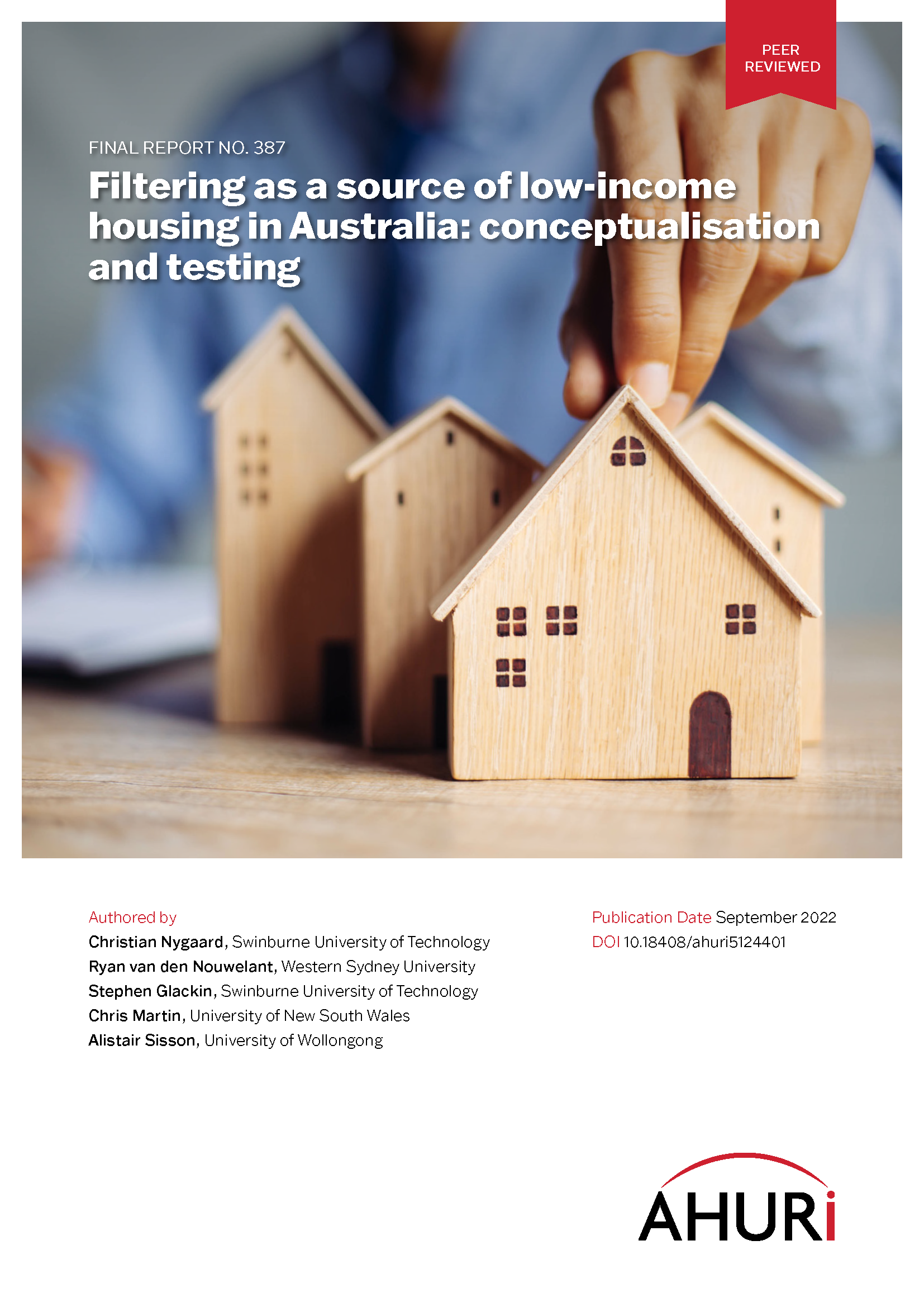
Does building high-quality housing make older properties more affordable?
15 Sep 2022
Filtering is a process whereby the building of new, higher quality dwellings for higher- and middle income households may result in additional supply of dwellings for lower-income households. Theoretically, as properties age and their perceived quality drops, over time they trickle down through successively lower market segments, ultimately becoming a supply of ‘naturally occurring affordable housing’.
New AHURI research shows that the price and occupant characteristics that should follow-on from housing market filtering are complex, and frequently absent in Australian housing markets. New supply does not necessarily result in older dwellings filtering down and becoming affordable options for lower-income households.
Analysis of Melbourne house prices suggests that, between 2006 and 2016, suburbs with older housing stock (which are relatively close to the central city and higher paying jobs) start off with higher relative incomes and increase their relative income more than areas with newer housing stock. This provides evidence of filtering up, rather than filtering down, in some market segments.
The research, ‘Filtering as a source of low-income housing in Australia’, undertaken for AHURI by researchers from Swinburne University of Technology, University of New South Wales, and University of Wollongong, adds insight on how filtering may contribute to market-provided low cost housing in Australia.
For filtering to operate, a number of things have to happen, such as properties becoming obsolete as they age; new properties providing a superior level of housing service (better quality, better location etc.); and, crucially, the rate of new dwelling construction exceeding the rate of new households forming.
‘We found that filtering relies on several critical assumptions: including, that any property and location in a city can be a substituted for any other property and location,’ says lead researcher Associate Professor, Christian Nygaard of Swinburne University of Technology. ‘However, properties are located in different areas with different neighbourhood characteristics. Therefore, where a property is located may matter as much as, or more than, what condition a property is in. In practice, the housing markets of our cities consist of a system of interconnected housing submarkets, defined by both geographic and property characteristics.’
While the analysis of owner-occupied housing in Melbourne suggests that areas with older housing stock frequently filtering up, analysis of the Sydney private rental markets did show that apartments were filtering down market over time when measured by rent received for a specific property relative to market medians.
However, rents in these apartments nevertheless increased relative to income, largely offsetting the effect of the affordability of individual properties due to price depreciation. For instance, in 1997 the actual rent for a one-bedroom was approximately 1.65 times the affordable rent. By 2019, the one-bedroom rent, adjusted for a 13 per cent depreciation, had increased to 1.86 times the affordable rent.
The Sydney analysis also found detached houses did not filter down consistently as they aged. An explanation might be that houses that have been rented for over 20 years are necessarily in neighbourhoods that are established, with stable communities, mature trees and more, all of which are valued by prospective tenants.
Apartments that have been rented for more than 20 years, on the other hand, pre-date the apartment design requirements that have been in place in Sydney since the early 2000s. This suggests this older stock will have lower levels of amenity, but not likely to have a significantly different geography to more recent additions to the rental market (as apartments are largely constrained to being built in inner cities locations across all periods).
In addition, the numbers of properties at the lowest rental segments (below 40% median) are vanishingly small. In other words, dwellings may well filter down the market over time, but there is a high level of attrition, with most dwellings’ trajectories down the rental market disrupted (by being demolished or refurbished) before they reach an affordable price for those on low incomes. As such, very little low-cost, or ‘naturally affordable’ private rental housing is generated through the process.

